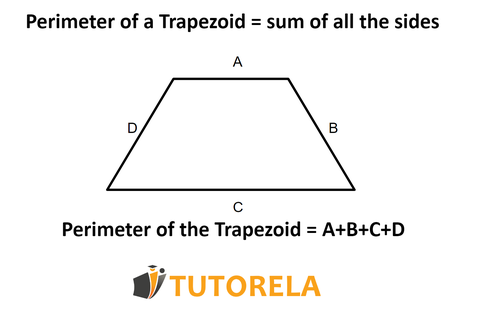The trapezoid is a quadrilateral defined as having 2 parallel opposite sides. The calculation of the perimeter of the trapezoid is solved using a very simple formula that we will see below: all sides are added together. This type of questions can appear in tests of the first and second level in the first years of high school and also in final exams of level 3, 4 and 5 for the graduation of the secondary cycle.
